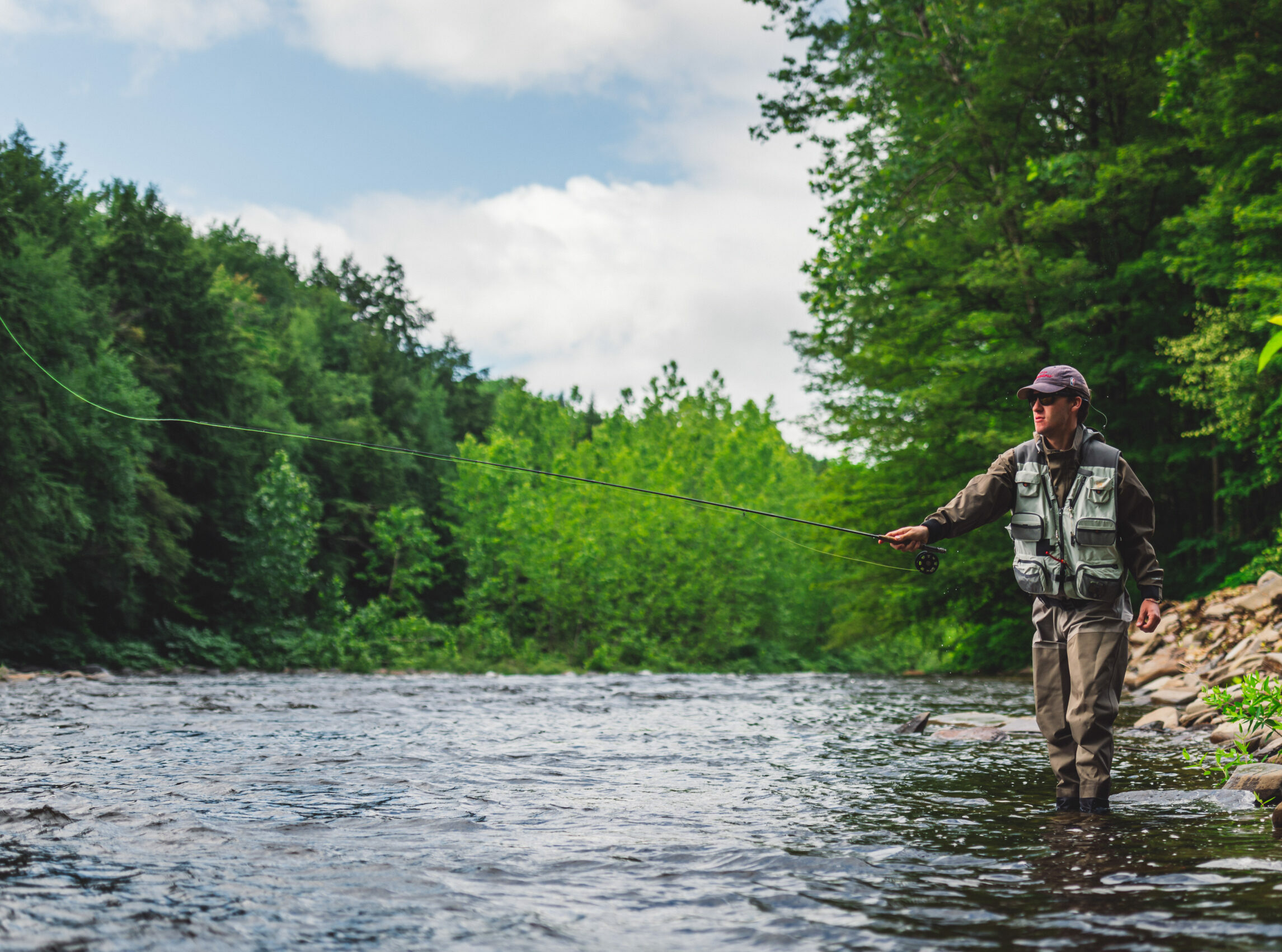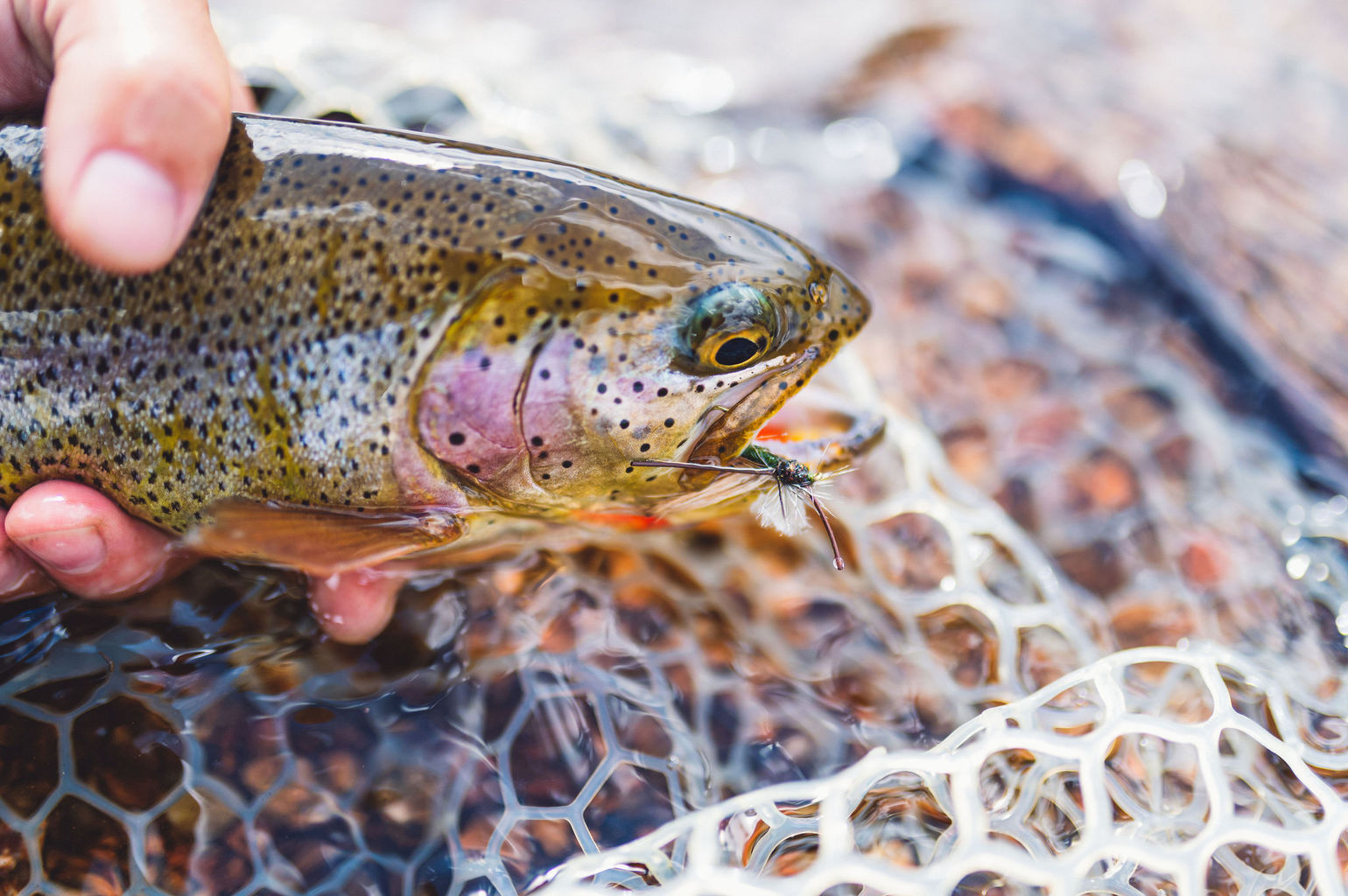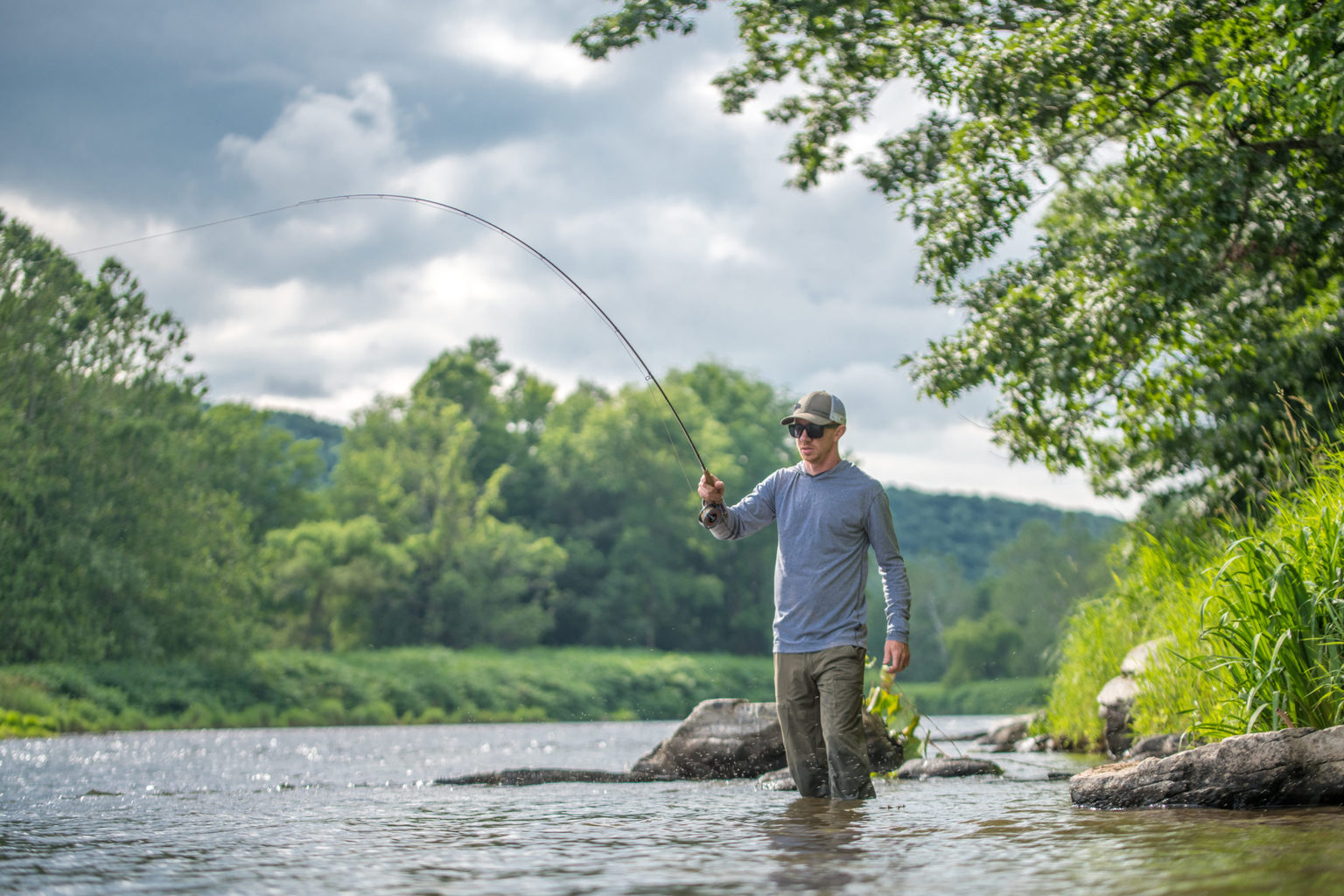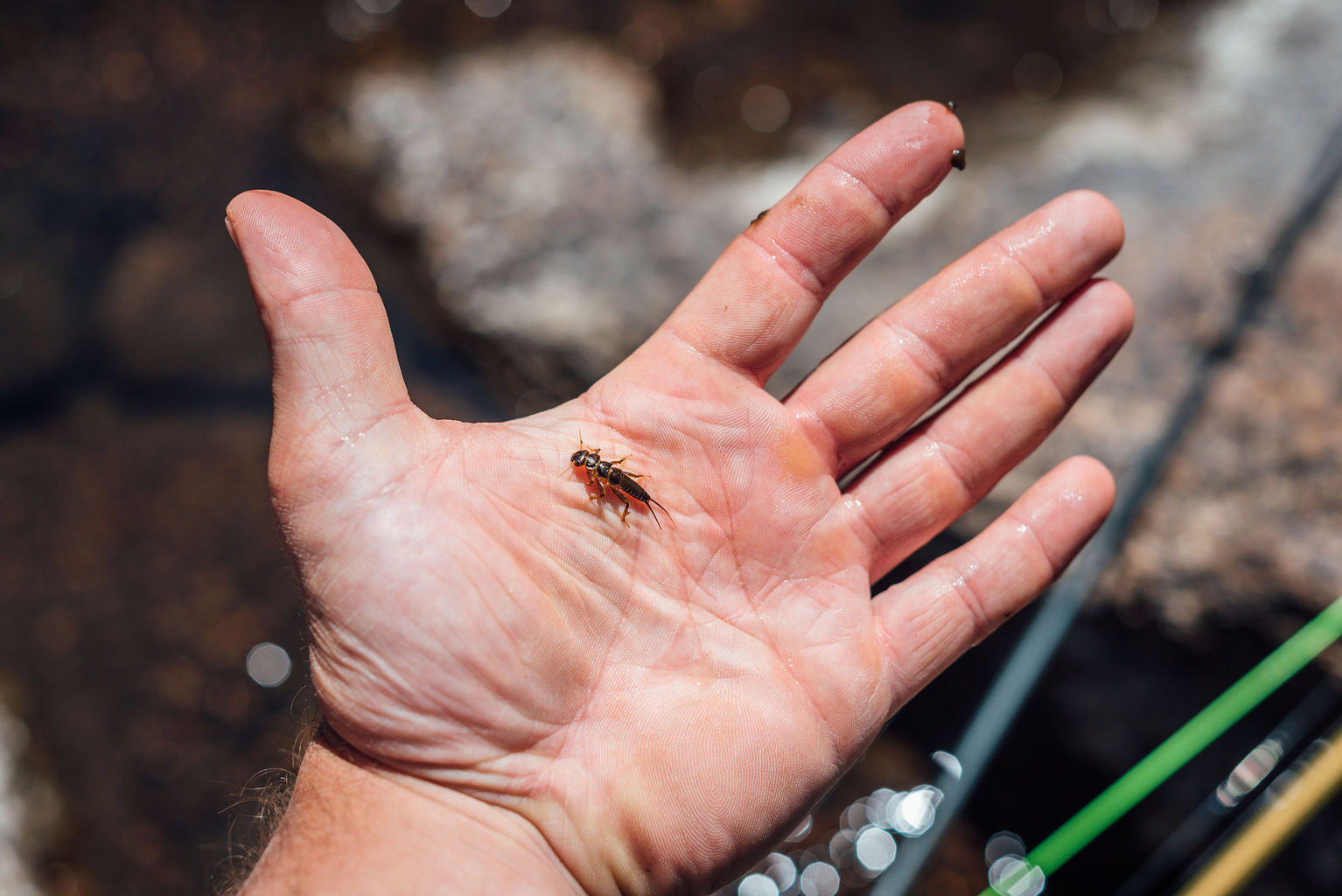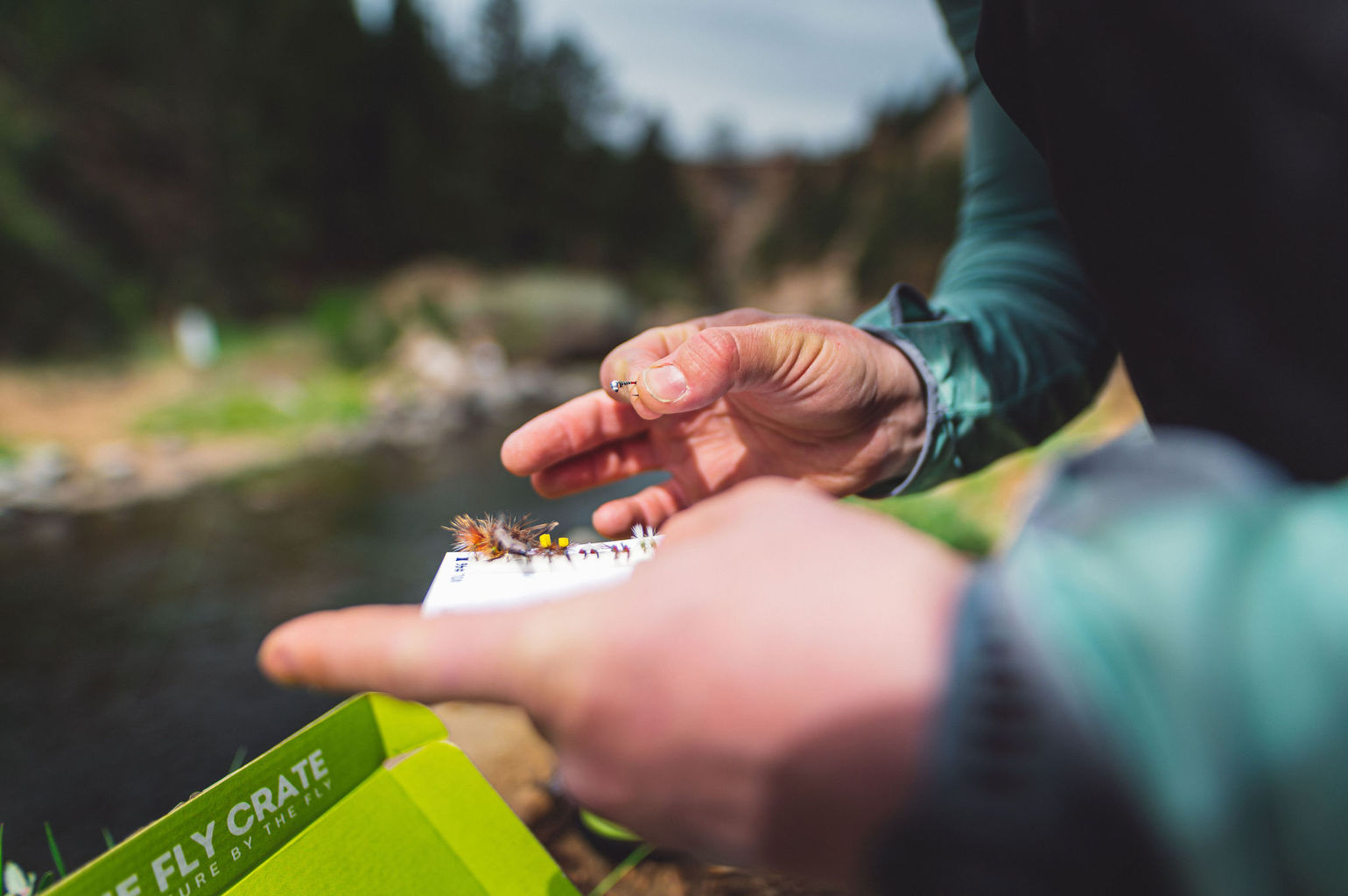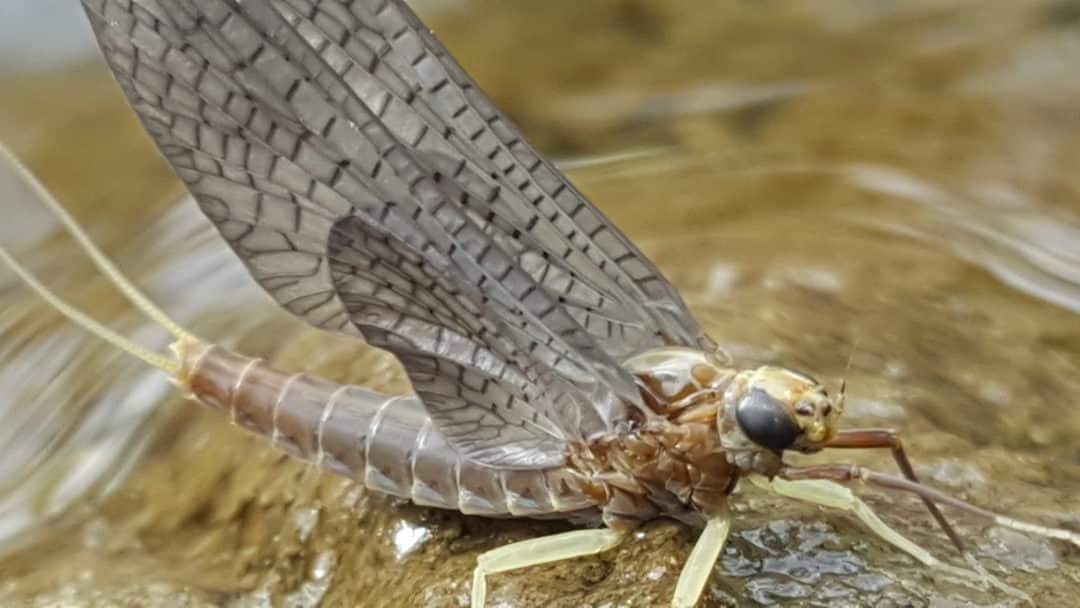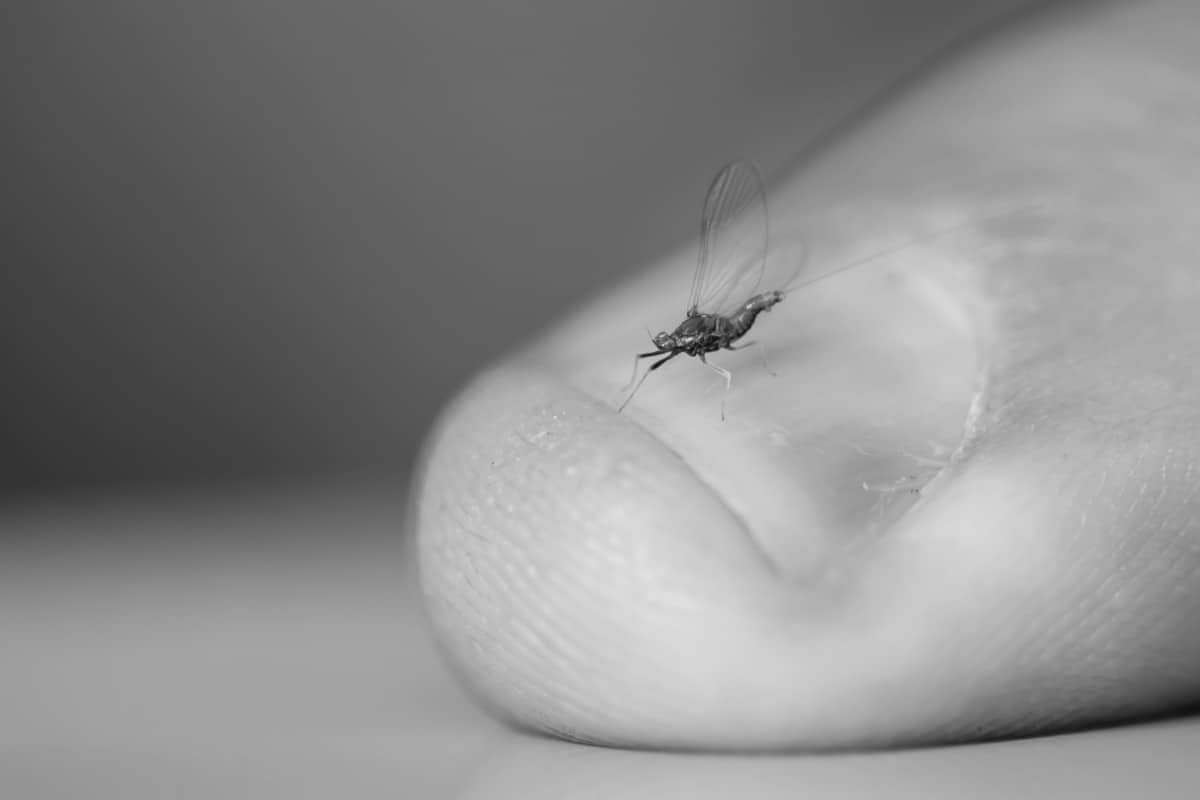What are the Best Casts for Dry Fly Fishing
In a world full of predators, trout scatter in the presence of unnatural movement. And for good reason, it keeps them alive. A slight hesitation could mean being in the beak of a great blue heron or the jaws of a mink.
Now you can understand how an aggressive cast can put down a pod of rising trout. The slap of the fly line on a heavy cast is more than enough to spook a pool. If you’re after these rising trout you’ll need a soft presentation that practically floats down onto the water like a feather.
How do I cast dry flies to trout?
There are many ways to cast your dry flies to trout such as the upstream, downstream, roll, and bow-and-arrow cast. All of these each have a specific time and place they are ideal for. So let’s break down when each should be used.
Upstream Cast

An upstream cast is the most common cast fly anglers make and is one of the easiest to perform. It is best for dry fly fishing. Casting upstream from behind the trout is perfect for presenting dry flies as mending is required less and your fly will drift naturally back to you with the water.
- Choose this cast if you’re able to position yourself downstream of the pool.
- Give yourself plenty of room to avoid snags.
- As you’re false-casting forward and back to add more line to your cast, judge distance and how far your line actually reaches out in front. This will give you a good idea of where your fly will land and whether you’ll overshoot the trout.
- Lead the trout several feet.
- Cast at a slight angle so your line doesn’t land directly over top of the trout.
This cast gives your dry fly a near-perfect dead drift.
Approaching behind the fish is also one of the safest methods without spooking the fish. Cast to the tail-end of the pool first and then work your way up to the head of the pool.
Downstream Cast

Positioning yourself above the area you want to fish is a great way to avoid spooking rising trout, but it does take more skill and casting room to make this worthwhile. Most anglers do a downstream cast because the may not have the time or space to reposition themselves for an Upstream cast.
However, a downstream cast is perfect for presenting the fly first to the trout, which would normally be spooked off by the fly line smacking the surface on an upstream cast.
To achieve a delicate and soft presentation, aim for the trees. Yes, aim for the trees and let your fly line level out several feet above the water then gently drift down. As it’s drifting down and before it lands on the water, bring your rod tip back to pull the line back towards you. This creates a few feet of slack.
This slack is what will give your dry fly a few feet of a dead drift.
- Give yourself plenty of room to avoid snags.
- Best in short casts of 30 feet or less.
- Cast above the surface and allow your line to straighten out above the water. Before it hits the surface, pull back a few feet of line to give your dry fly several feet of slack.
- Lead the trout several feet.
Watch your drift carefully. Your ‘dead-drift’ will end abruptly as your fly line runs out of slack and is pulled straight. This will cause your dry fly to drag on the surface.
Roll Cast

The Roll Cast is arguably the most useful and underrated cast in fly fishing. It’s perfect for making longer casts in tight spaces. In addition, the roll cast can be made very quickly with every little effort.
Master this cast.
With the line in front of you on the water, lift your rod tip up towards the sky. As you do this motion, the fly line will begin to make a bow or loop heading behind you. When the fly line crosses behind the vertical rod and makes a D, with the straight part of the D being your rod and the line making up the curved part, impart the same forward stroke you would during the overhead cast. The line will follow the loop and layout in a straight presentation. It is a very simple cast but can be used in a lot of situations.
The Roll Cast is to fly fishing as the trim hammer is for a tool belt. Precise, accurate, and repeatable.
- Can be done in tight spaces with overhanging branches.
- Best in short casts of 20 feet or less.
- Form a “D” with your rod and fly line. Bring your fly rod tip pointed straight up. Allow your fly line to droop behind the fly rod, creating a “D”. Quickly flick your fly rod forward and point above where you want the fly to go. The line will roll out above the surface and complete the cast.
The Roll Cast is used to present nymphs, dry flies, or emergers quite a bit. It can be used very effectively at sub-twenty-foot distances. Small streams can be picked apart with roll casts from one position.
This form of casting is also great for repeating drifts. Remember that often when a trout is in a “Feeding Lie” if that fish moves, generally another will move into that same spot. So if you catch fish number one, number two might be a rinse and repeat away. Roll Casts are also very helpful when there are a lot of overhanging branches and the like around you. This cast happens almost entirely in front of the angler.
Bow-And-Arrow Cast

The Bow-and-Arrow cast is the best fly fishing cast to use when trees and brush are behind you. It was designed to use in small spaces with very little casting room.
Plus, it’s not only fun to do but it’s easy to learn. The Bow-and-Arrow cast is exactly what it sounds like. You will be pretending that your rod is your bow, the line is your bowstring, and the fly is your arrow. Rather than stringing it to your reel, you’ll pull the line back to your cheek and let loose!
Before you do anything, let me break it down for you.
- Unspool 1 ½ rod lengths of line.
- Tightly pinch your line with two fingers a few inches above your fly or at a point, you are securely holding on to.
- Point your rod where you want to cast.
- Draw the line back to your shoulder *Mind the fly and avoid slipping or hooking yourself.
- Make sure to build tension and make the line taut.
- When you’re ready, let go of your line while gently giving your rod a flick to shoot the line out towards your target.
For greater distance, make large loops with a few feet of the line up near the end of your leader and pinch the loops tightly in your fingers. Then, draw it back and fire.
How to Make a Delicate Cast

There are two way’s to get a delicate cast, with lots of speed or with just enough speed to get it there. Deciding between the two comes down to how much wind you’re dealing with. Cross-winds can make casting with accuracy and softly extremely difficult.
1. Casting with Speed
The only way to cut through the wind is by casting with speed.
The basic idea is to cast hard roughly 3 feet above the water and lower it to the water.
First, pick your placement and lead the fish a few feet. You don’t want your line landing directly over top of them. Ideally, the first thing the fish sees is your fly with your line never floating down over them.
Getting this “fly-first” presentation is really all about knowing how to position yourself along the stream. Position yourself at an angle so you’re casting up or down the stream at an angle. If getting a good angle is tough you can always mend your fly line up and out of the way before the line hits the water.
Next, make your cast with enough power to penetrate the wind. It’s important to let your line roll over and straighten mid-air 3-feet or so above the water. All at once, your fly line will straighten and then lower to the water almost as if the floor fell through below it. When this happens guide your fly line down with the rod tip to soften the line hitting the water.
2. Casting Softly
The alternative to casting with speed is casting so gently while aiming above the water, that your line has just enough power to flick your fly forward. It’s more of a throw than anything. The downside to this method is its lack of accuracy.
Your line is cast forward with barely enough power to pinpoint your target and any breeze or loss of momentum will blow the fly off course. For me, this cast is more of a side-arm technique to add some distance between me and the fly; needless to say, I’ve hooked into my clothing a few times doing this method. In most cases, you can get away with making multiple mistakes because these type of casts are so soft it barely leaves a ripple.
How do you take your fly away without spooking the fish?
So you’ve made your cast and your fly went off target.
You want to make another attempt but your line is sitting in an area where when you lift it out the commotion might scare a few fish.
There is a real technique to pulling your line out for another cast and doing so without spooking the whole pool. You really only have two options, drag the line away or let the line drift out of the danger area before making another cast.
- Drag the line away.
- Let the line drift out of the danger area.
The good news is your can make another attempt just by lifting straight back. As softly as you can and all in one motion, point your fly rod tip up high as you lift straight out behind you while giving a gentle flick back directly into your back-cast.
Fly Fishing Made Easy 👍
Our Quarterly Fly Club ships 1,000’s of flies to anglers all across the United States. Receive curated fly assortments selected for the season with in-depth articles on how to fish them. Great for beginners to learn and for intermediates to discover new flies.

